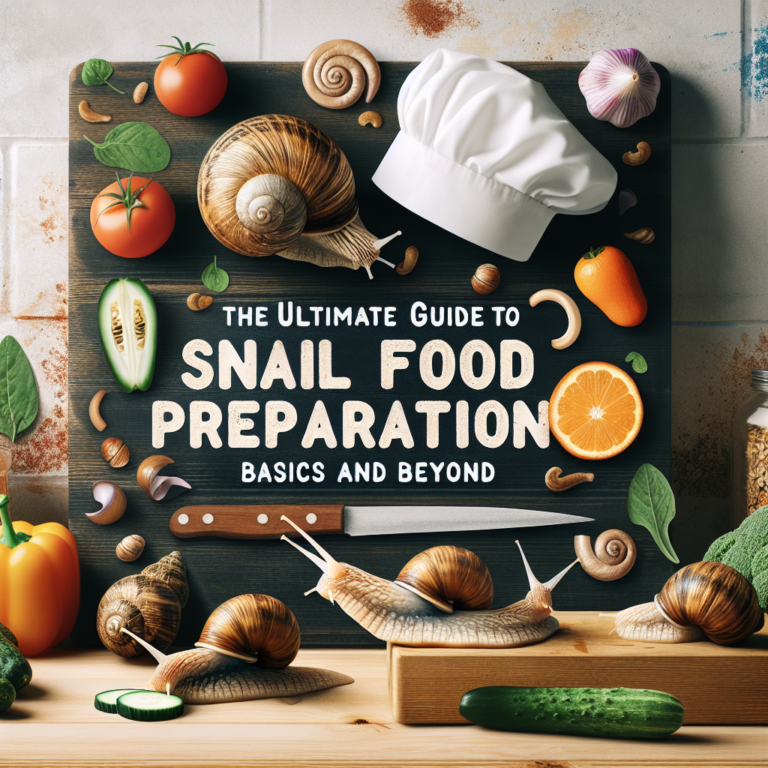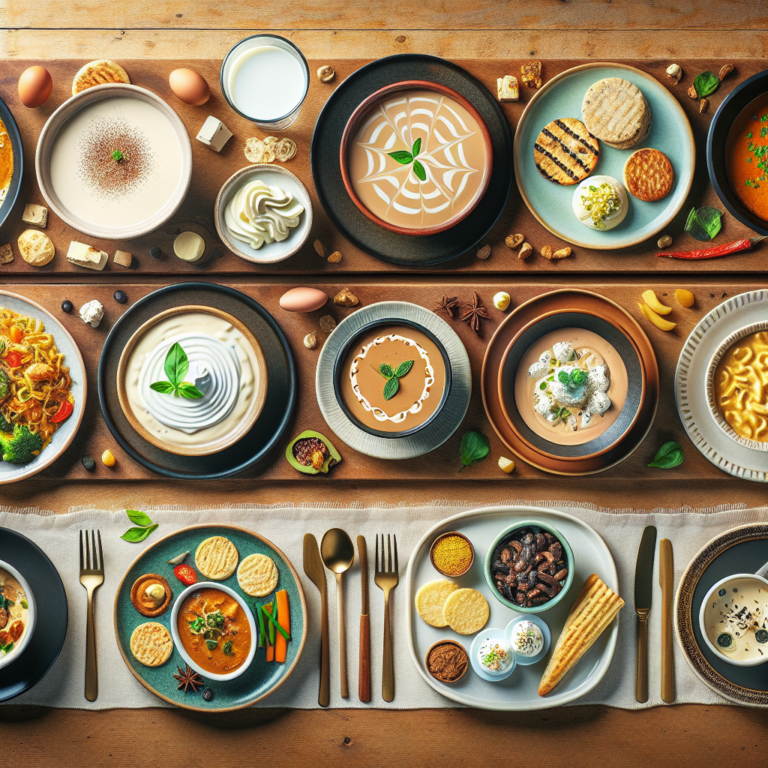
When it comes to French cuisine, few dishes evoke the same level of intrigue and passion as escargot. This classic delicacy, often served as an appetizer, is made from land snails, traditionally prepared with a rich garlic and parsley butter. For many, escargot might seem like an unusual choice, but its unique flavor and texture, paired with its cultural significance, make it a beloved dish in French gastronomy. In this article, we will explore the history, preparation methods, cultural appeal, and nutritional aspects of escargot, providing a deep dive into why this timeless French appetizer continues to captivate food enthusiasts around the globe.
A Brief History of Escargot
The history of escargot can be traced back thousands of years. Snails have been consumed by humans since ancient times, with archaeological evidence showing that cultures in the Mediterranean, including the Romans and Greeks, enjoyed them as part of their diet. In France, escargots began to rise in prominence during the 18th century when they were discovered to be not only edible but also a culinary delight.
The word “escargot” comes from the French word for snail, derived from the Latin term “escar-gare.” The French began to develop specific recipes and preparation methods that highlighted the delicacy of snails. These methods often include pairing the snails with herbs, butters, and sauces to enhance their natural flavor. By the 19th century, escargot had become a staple of French haute cuisine, served in fine dining establishments and enjoyed by food lovers.
The Different Types of Escargot
While the most widely used species for escargot is the Helix pomatia (also known as the Roman snail or Burgundy snail), several other species are also used in various regions. Some of these include:
- Helix aspersa: Known as the common garden snail, this species is often found in European gardens and is also consumed in different culinary traditions across Europe.
- Eobania vermiculata: A species of land snail found in the Mediterranean region, it is less common in gourmet cooking but still plays a role in local dishes.
- Achatina fulica: Also known as the giant African snail, this species is enjoyed in various cuisines around the world, including parts of Africa and Asia.
Preparing Escargot
The preparation of escargot is an art in itself, and while the ingredients may vary, the core element remains the same: snails must be cleaned and properly cooked to ensure they are tender, flavorful, and safe to consume. Below is a step-by-step guide to preparing classical French escargot:
Step 1: Sourcing Escargot
Before preparing escargot, it’s crucial to source your snails from a reputable supplier. Fresh escargot can often be found in gourmet markets, specialty food stores, or online. For those preferring convenience, canned or frozen escargot is also available and can save time during preparation.
Step 2: Purging the Snails
If you are using live snails, they must first be purged to rid them of any toxins or unpalatable substances. This usually involves feeding the snails a diet of cornmeal for a few days and then rinsing them thoroughly with water. Once purged, the snails can be cooked.
Step 3: Cooking the Snails
Cooking escargot typically involves boiling them briefly before the final preparations begin. Boil the snails in salted water for about 5 to 10 minutes. This step ensures that they are tender and helps to remove any remaining grit.
Step 4: Preparing the Garlic-Butter Mixture
One of the hallmarks of escargot is the rich garlic-butter sauce that accompanies the dish. To prepare this mixture, you’ll need:
- 1 cup unsalted butter, softened
- 4 to 5 cloves of garlic, minced
- 1/4 cup fresh parsley, chopped
- Salt and pepper to taste
- Optional: a splash of white wine or brandy for added flavor
In a mixing bowl, combine the softened butter, minced garlic, chopped parsley, and seasoning. Mix until well combined. You can also refrigerate the mixture for a while if you prefer a firmer consistency.
Step 5: Stuffing the Snails
Once the garlic-butter mixture is ready, it’s time to stuff the snails. Using a small spoon or piping bag, generously fill the shell of each snail with the mixture. Ensure each snail is adequately coated, as this will enhance the flavor during the cooking process.
Step 6: Baking the Escargot
Preheat the oven to 400°F (200°C). Arrange the stuffed snails in a baking dish. Pour a splash of white wine or broth at the bottom of the dish to keep the snails moist while cooking. Place the dish in the oven and bake for about 10-15 minutes or until the butter is bubbling and the snails are heated through. Garnish with additional parsley if desired before serving.
Servicing Escargot
Escargot is traditionally served in its shell, often accompanied by crusty French bread or baguette to soak up the garlic-butter sauce. The dish is usually presented in specialized escargot dishes with indentations to hold each shell. This presentation not only enhances the dining experience but also reflects the dish’s rich cultural roots.
The Cultural Significance of Escargot
Escargot is more than just a dish; it embodies a cultural heritage that reflects French culinary traditions and the country’s penchant for elevating simple ingredients into exquisite meals. Enjoyed in France and across the world, escargot is often associated with celebration, indulgence, and fine dining.
In French culture, escargot serves as a symbol of sophistication. It is commonly enjoyed in bistros and high-end restaurants, often as part of multi-course meals. The act of dining on escargot involves a certain flair, from the way the dish is presented to the ritual of extracting the snail from its shell with a special fork. This unique aspect makes escargot not just food, but an experience in itself.
The Nutritional Profile of Escargot
Despite its reputation as a luxurious delicacy, escargot is surprisingly nutritious. Snails provide a rich source of protein, vitamins, and minerals, making them a healthy addition to a balanced diet.
- Protein: Escargot is an excellent source of protein, containing about 16g per 100g serving, making them an ideal option for those seeking to increase their protein intake.
- Low in Calories: Snails are low in calories, with approximately 90 calories per serving, making them a guilt-free indulgence.
- Vitamins and Minerals: Escargot is rich in nutrients, including vitamin B12, vitamin E, magnesium, and zinc.
However, it is essential to note that the nutritional value of escargot can vary based on preparation methods, particularly when excess butter and creams are added. Enjoying escargot in moderation can provide health benefits while also being a delightful culinary experience.
Conclusion
Escargot is more than just a dish; it is a celebration of French culinary artistry and tradition. From its intriguing history and diverse preparation methods to its cultural significance and nutritional benefits, escargot encapsulates the essence of fine dining. For adventurous food lovers, trying escargot is not only about tasting the delicacy but experiencing a rich slice of French culture. Whether savored at a high-end restaurant or prepared in the comfort of your own kitchen, escargot remains a timeless appetizer that has enchanted palates for centuries.
FAQs
1. Is escargot safe to eat?
Yes, escargot is safe to eat as long as it is properly prepared. Ensure that the snails are sourced from a reputable supplier and that they are cooked adequately to reduce the risk of contamination.
2. What does escargot taste like?
Escargot has a subtle, earthy flavor with a tender texture. When prepared with garlic and butter, the dish takes on a rich and savory profile, often compared to that of other shellfish such as clams or mussels.
3. Can I use canned escargot for cooking?
Yes, canned escargot is convenient and can be used in recipes that call for fresh snails. Just ensure to rinse them thoroughly before using to remove any excess sodium or preservatives.
4. Are there vegetarian alternatives to escargot?
While escargot itself is not vegetarian, some recipes replicate the experience using various alternatives such as mushrooms or artichoke hearts, prepared with garlic and herbs to mimic the flavor profile.
5. What should I serve with escargot?
Escargot is often served with crusty bread to soak up the garlic-butter sauce. A light salad, white wine, or champagne also pairs beautifully with this appetizer.
It seems like your message got cut off. Could you please provide more details or clarify what you would like help with? Whether it’s a writing prompt, a question, or something else, I’m here to assist you!, #Allure #Escargot #Timeless #French #Appetizer, #Allure #Escargot #Timeless #French #Appetizer, 1736216483, the-allure-of-escargot-a-timeless-french-appetizer








